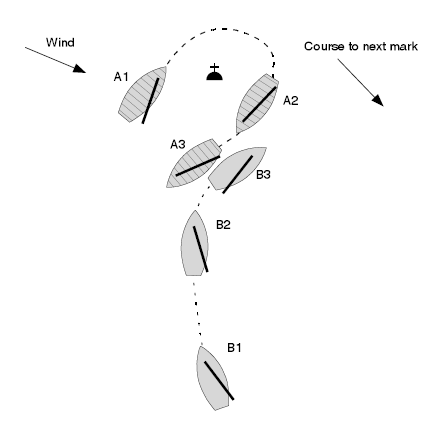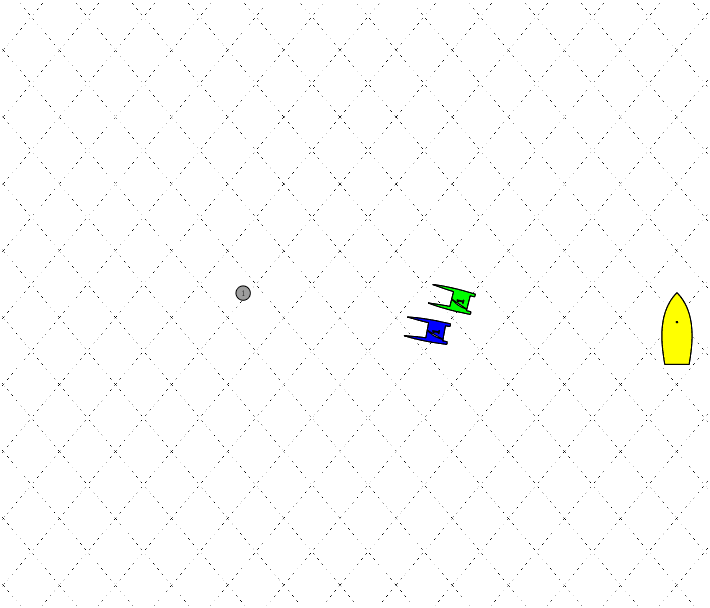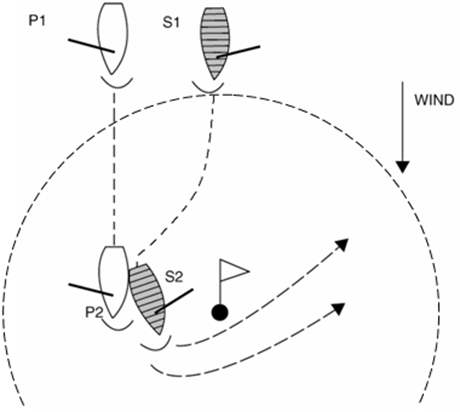(This is an instalment in a series of blogposts about the ISAF Call book 2009-2012 with amendments for 2010. All calls are official interpretations by the ISAF committees on how the Racing Rules of Sailing should be used or interpreted. The calls are copied from the Call book, only the comments are written by me.)
This is a catch-up post (originally slotted for week 52/10)
CASE 59
Rule 18.2(a), Mark-Room: Giving Mark-Room
Rule 18.2(b), Mark-Room: Giving Mark-Room
When a boat comes abreast of a mark but is outside the zone, and when her change of course towards the mark results in a boat that is in the zone and that was previously clear astern becoming overlapped inside her, rule 18.2(a) requires her to give mark-room to that boat, whether or not her distance from the mark was caused by giving mark-room to other boats overlapped inside her.
Assumed Facts
Five boats were approaching a leeward mark dead before the wind. Four of them were overlapped in line with A nearest the mark. The fifth boat, E, was clear astern of A, B and C when those three boats reached the zone. When D came abreast of the mark and turned to round it, E became overlapped inside D. This occurred after E had already reached the zone and before D reached it. E rounded the mark behind A, B and C but inside D, which was able to give mark-room to E.

Question
Was E entitled to mark-room under rule 18.2(a) from D?
Answer
Yes.
Because E was clear astern of A, B and C when they reached the zone, she was required by rule 18.2(b) to give each of them mark-room. Between E and D, however, a different relationship developed. In order to leave room for the three inside boats with their booms fully extended, D had to approach the mark on a course that brought her abreast of it outside the zone. When E reached the zone, she was clear astern of D and D was still outside the zone. Therefore, rule 18.2(b) did not apply between D and E. When D changed course towards the mark, E obtained an inside overlap and rule 18.2(a) began to apply between D and E. E was entitled to markroom under that rule, which D was able to give.
USSA 1982/250
![]()
In big fleets this is frequently and issue. While boat D thinks he’s clear ahead and doesn’t have to let any other boat in he never enters the zone until he has luffed. With the increase from two to three lengths zone this issue has marginally “improved”. That is to say it plays out more to the perception of the sailors. But like in this case if there are four or five abreast it still should be considered.






























